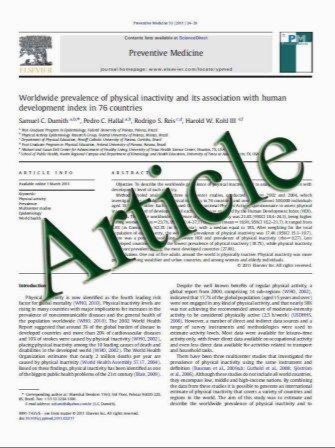Impact of minimising door-to-balloon times in ST-elevation myocardial infarction to less than 30 min on outcome: an analysis over an 8-year period in a tertiary care centre
- نوع فایل : کتاب
- زبان : انگلیسی
- مؤلف : Ulrike M. Mu¨ ller Ingo Eitel Kristina Eckrich Sandra Erbs Axel Linke Sven Mo¨bius-Winkler Meinhard Mende Gerhard C. Schuler Holger Thi
- چاپ و سال / کشور: 2010
Description
Background Guidelines recommend door-to-balloon times (DBTs) below 60 min for patients with ST-elevation myocardial infarction (STEMI) undergoing primary percutaneous coronary intervention (PCI). The purpose of this study was to determine if an optimised STEMI-protocol reduces DBT and increases the number of patients to receive PCI within 60 min of hospital presentation. We hypothesised that DBT of \30 min can be accomplished for the majority of patients. Methods and results Between 2001 and 2008 data from 1,146 consecutive patients with acute STEMI admitted for primary PCI within 12 h after symptom-onset were analysed. Times to angioplasty from symptom-onset (pain-toballoon time, PBT) and from hospital arrival (DBT) to PCI and clinical outcomes were analysed. In the end of 2003 numerous strategies were implemented to reduce revascularisation times. These strategies resulted in a stable reduction of median DBT to 29 min [interquartile range (IQR) 22–39]. Overall, 94% of patients had median DBT\60 min and 56%\30 min. Consequently, PBT was significantly reduced from median 218 min (IQR 168–286) to 167 min (IQR 119–245) for non-transferred patients. Major cardiac adverse events (composite of congestive heart failure, reinfarction and cardiac death) were significantly associated with DBT[30 min and age, systolic blood pressure, anterior infarction, PBT[4 h, cardiogenic shock as well as multivessel disease. Conclusions A dedicated STEMI-protocol including several hospital strategies is feasible during daily clinical practice to decrease revascularisation times, results in a greater proportion of patients achieving guideline recommendations, and is associated with an improved clinical outcome.
Clin Res Cardiol (2011) 100:297–309 DOI 10.1007/s00392-010-0242-7 Received: 27 April 2010 / Accepted: 1 October 2010 / Published online: 24 October 2010


